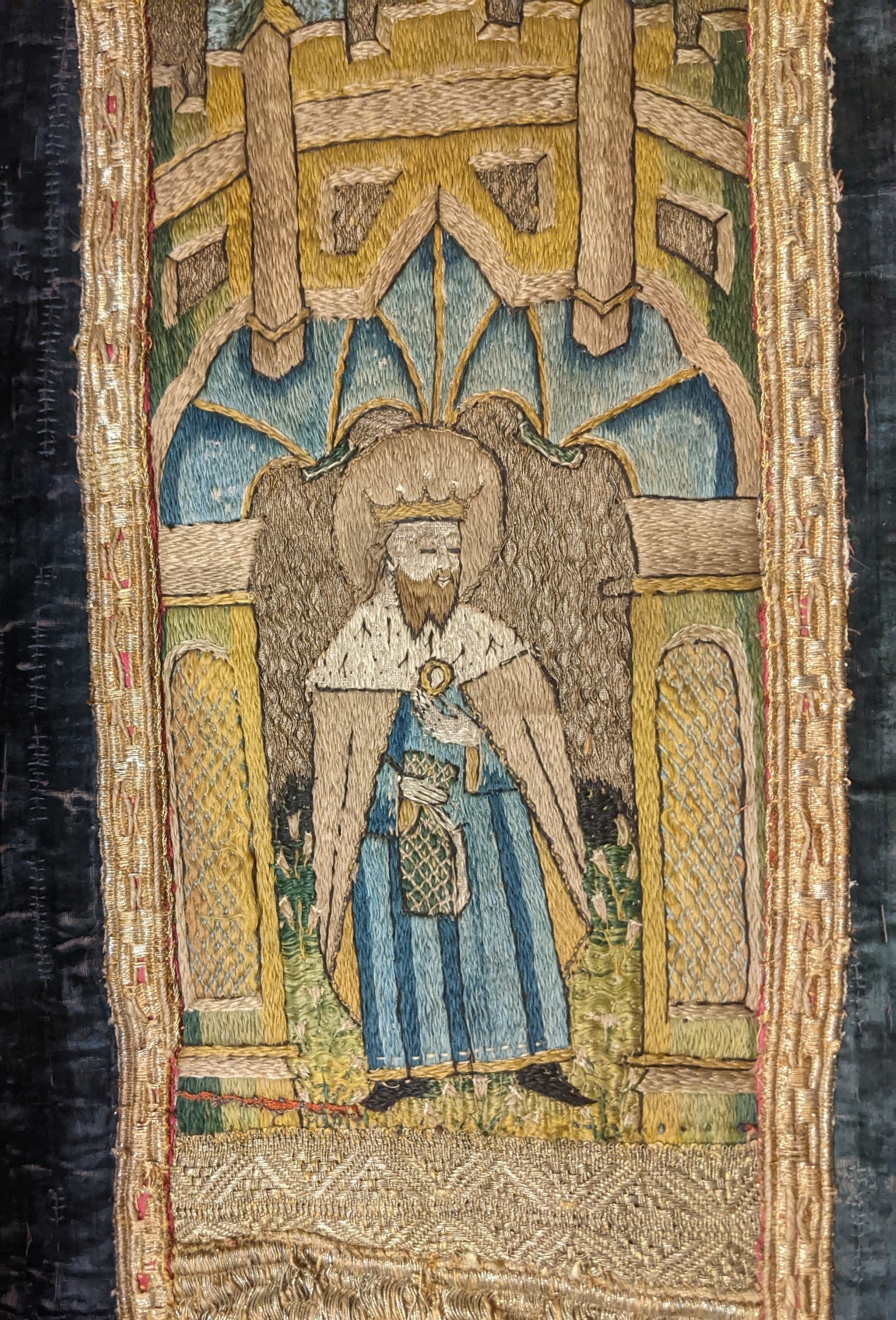
This term, I have been looking through archives related to the Campion Hall vestment collection. One item that appears in almost every catalogue or list since the 1930s is the precious Basset vestment, which Master Martin D’Arcy picked up in a shop on Bond Street in London. In a delightful piece of prose, he noted that an expert antique dealer visiting the Hall had praised him for the purchase, but the fathers were unsure about the identity of the embroidered figures until “a Miss Buckler told us that they were obvious to anyone who knew the legend of St. John the Evangelist clothed as a pilgrim giving St. Edward the Confessor a ring” (Cat. D).
Catalogues A to E, which were most likely written by masters or members of the Hall from the 1930s to the 1960s, provided short variations on the theme: “14th C. purple one side, & 15th C. other side – chasuble.” (Cat. A) Notably, a couple of catalogues foregrounded the narrative, e.g., Catalogues E and G included the same excerpt about the encounter between St. John and St. Edward from Saints and their Symbols (E. A. Greene, 1881).
More recent listings have taken a technical turn. Professional assessments in 1986 and 2009 highlighted the potential value of several vestments, including this chasuble, if insured or sold. A catalogue by Mr. Frank Rhodes in 2015 offered a whole paragraph on the materials and iconography of the Basset vestment then concluded that its orphreys date to the late 15th century while the velvet combined two pieces from the 15th and 18th century.
My personal favourite of the catalogue entries, though, is from Cat. F (c. 1983), which found the Basset vestment to be “quite all right, but it is not much of a vestment” and recommended that “[p]arts of it should be shown in small frames”, possibly insinuating that the chasuble could be cut up and its best sections displayed. Although I am glad that the vestment remains with us intact, it is very interesting to consider such a different approach to collection management from only a few decades ago!
In the weeks ahead, I shall continue annotating our archive handlist and cataloguing the vestments themselves. I am incredibly grateful for the gracious supervision of Jane Stevenson and Peter Davidson, archival guidance from Alice Millea and Diarmaid MacCulloch, logistical help from Trudi and Karolina, and the countless moments that I have received such good research advice from Hall members. Together with 3D models of selected vestments — which we made with the help of friends from the Oxford Internet Institute and the Bodleian — all the gathered information will hopefully make it easier to discover, study, and enjoy the Hall’s remarkable vestment collection.